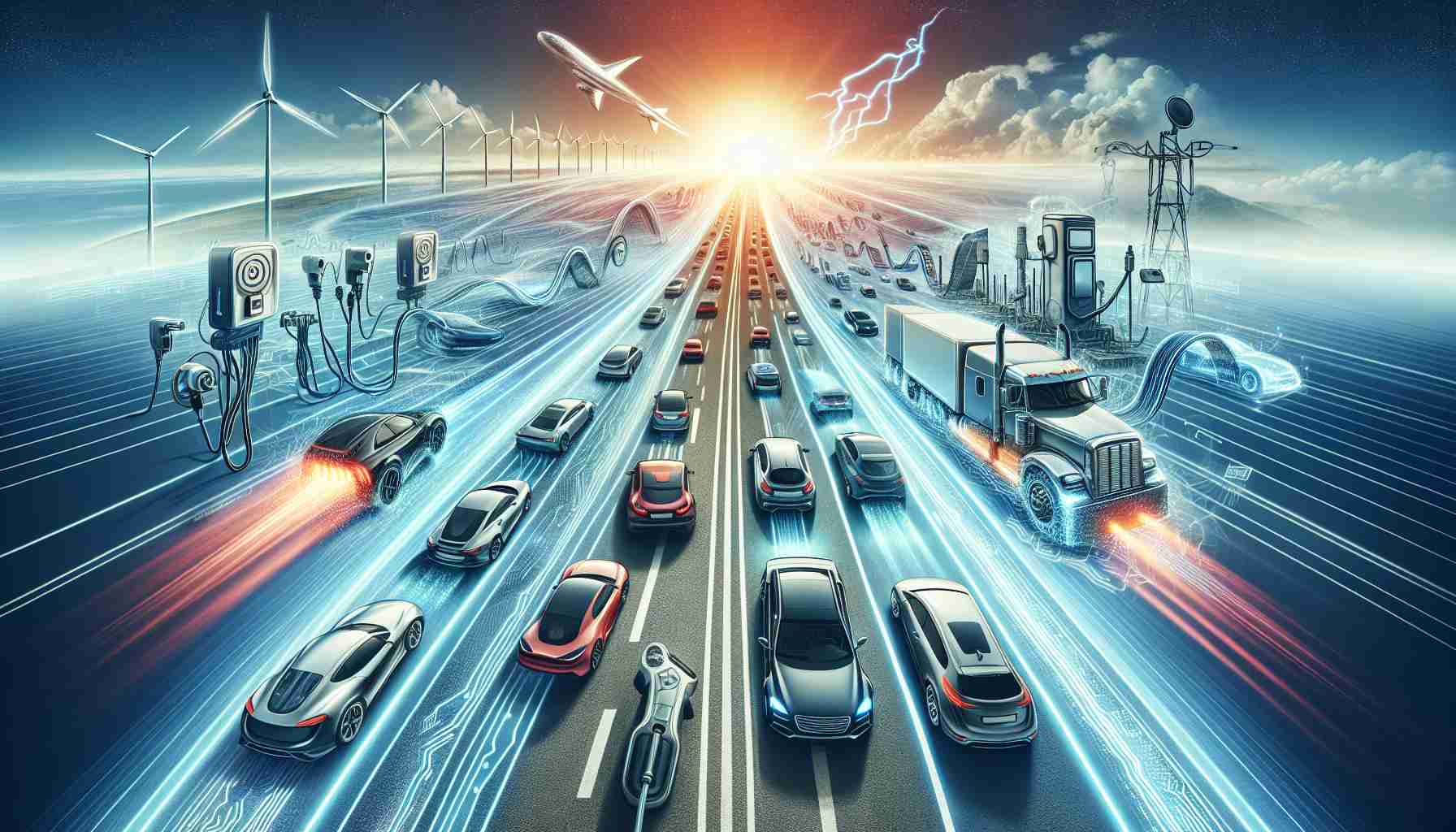- Faraday Future begins U.S. testing of its FX 6 models, aiming to reach a wider audience with models priced between $30,000 and $50,000.
- Massimo Motor Sports shifts MVR golf cart production to the U.S., enhancing quality and creating jobs.
- XCharge North America and Orlando Utilities test battery-integrated chargers, addressing energy demands in Florida without major grid changes.
- Zerova and Go Eve collaborate on rapid DC charging technologies, optimizing charging infrastructure.
- KULR and Worksport focus on battery safety and U.S. production, leading in sustainable energy.
- Toyota introduces a third-generation fuel cell system, advancing hydrogen energy deployment worldwide.
- EVPassport partners with CBRE to expand EV chargers in residential and hospitality sectors.
- Ram offers configurations for the ProMaster EV cargo van, signifying growth in commercial electric vehicles.
- Innovations drive an electrified future emphasizing sustainability, efficiency, and collaboration.
The electric vehicle wave continues to surge, with notable strides from key players reshaping the landscape. Faraday Future revs up its presence in the U.S., transferring prototype FX 6 models to Los Angeles as it embarks on rigorous testing phases. These highly anticipated models, priced accessibly between $30,000 and $50,000, embody Faraday’s ambition to captivate a broader audience.
Meanwhile, Massimo Motor Sports makes a bold move by relocating its MVR golf cart production stateside. This transition underscores a commitment to impeccable quality and operational efficiency, reducing overseas dependency and sparking new employment opportunities.
In the realm of charging, XCharge North America partners with the Orlando Utilities Commission to test groundbreaking battery-integrated chargers, promising a seamless fusion of stability and affordability. These advancements cater to Florida’s burgeoning energy needs without hefty grid overhauls.
Dynamic duos like Zerova and Go Eve enhance charging efficiency via clever tech partnerships, enabling rapid DC charging solutions for varied venues. Their union epitomizes the power of innovative collaboration.
On the tech frontier, KULR and Worksport unite to fortify battery safety and domestic production, positioning themselves at the forefront of sustainable energy.
Toyota’s unveiling of its third-generation fuel cell system signals a visionary leap towards a hydrogen-reliant future, with applications promised across continents and transport modes.
As EVPassport joins forces with CBRE, EV chargers find more homes in residential and hospitality properties, reflecting an upward trend in eco-conscious real estate.
Even the commercial sector feels the electric charge, as Ram opens configurations for its ProMaster EV cargo van, a testament to the commercial viability of electrified mobility.
Collectively, these innovations illuminate a path toward an electrified tomorrow—one geared toward sustainability, efficiency, and groundbreaking collaboration.
The Ultimate Push Towards Electric Ventures: What You Need to Know Now!
How-To Steps & Life Hacks
If you’re considering diving into the electric vehicle (EV) market, here are a few actionable steps:
1. Determine Your Needs: Assess your daily driving habits. For short urban commutes, a more affordable EV like the Faraday Future FX 6 might be suitable. For long-range requirements, consider models with extended battery life.
2. Research Charging Options: Familiarize yourself with local charging infrastructure. Utilize apps like PlugShare or ChargePoint to locate chargers in your area, considering the advancements like those by XCharge North America.
3. Explore Incentives: Look into government incentives for purchasing EVs, such as tax credits or rebates, which can significantly lower initial costs.
4. Evaluate the Ecosystem: Charging facilities in your vicinity, possibly including those influenced by EVPassport’s collaborations, can impact convenience.
Real-World Use Cases
– Urban Mobility: Faraday Future FX 6 models are particularly designed for urban commuters who need affordability combined with modern tech.
– Commercial Sector: Ram’s ProMaster EV cargo van is apt for logistics companies looking to reduce carbon footprints.
Market Forecasts & Industry Trends
The EV market is forecasted to grow exponentially, with a CAGR of over 29% from 2021 to 2026. Emerging markets and stricter emissions regulations are major catalysts for this growth. Companies like Toyota, with innovations in hydrogen fuel cells, could diversify propulsion trends beyond traditional EVs.
Reviews & Comparisons
– Faraday Future FX 6: Known for affordability and sleek design, particularly appealing to price-sensitive buyers.
– Ram ProMaster EV: Offers substantial cargo space and electrified power, ideal for commercial uses.
Controversies & Limitations
– Charging Infrastructure: Despite advances, the lack of widespread infrastructure remains a significant barrier, though partnerships like Zerova and Go Eve aim to alleviate this.
– Battery Production: Environmental concerns around lithium mining necessitate sustainable practices, a focus of collaborations like KULR and Worksport.
Features, Specs & Pricing
– Faraday Future FX 6: Expected to retail between $30,000 and $50,000; key features likely include advanced safety systems and high-tech interfaces.
– Toyota’s Fuel Cell System: Promises efficiency and zero emissions, with potential cross-industry applications.
Security & Sustainability
– EVs, generally considered safer than internal combustion engines, are further secured through tech advances in battery safety spearheaded by companies like KULR.
– Sustainability is emphasized by reducing manufacturing footprints via local production initiatives by companies such as Massimo Motor Sports.
Insights & Predictions
– Increased Adoption: A shift towards electric mobility is inevitable as more players innovate and infrastructure matures.
– Hydrogen Leadership: Toyota could pioneer the hydrogen vehicle sector due to their strategic investments in fuel cells.
Tutorials & Compatibility
– Charging Tips: Ensure compatibility with home charging setups; seek professional installation guidance where necessary.
Pros & Cons Overview
Pros:
– Environmental Benefits: Significant reduction in greenhouse gas emissions.
– Cost Savings: Lower maintenance and fueling costs over time.
Cons:
– Range Anxiety: Limited driving range compared to gasoline vehicles.
– Initial Costs: Higher upfront investment, albeit offset by incentives.
Actionable Recommendations
1. Stay Informed: Follow industry news to catch the latest advancements.
2. Test Drives: Experience various models to determine what suits your needs.
3. Network: Join online forums or local EV groups to share experiences and tips.
For further resources on the evolving EV landscape, visit Faraday Future and Toyota to explore their offerings firsthand.
By diving into these details and leveraging the opportunities presented, you’ll be well-equipped to transition towards electrified mobility with confidence.

















